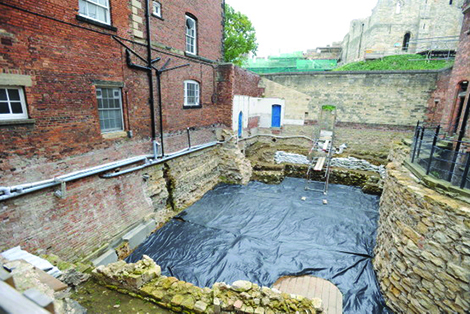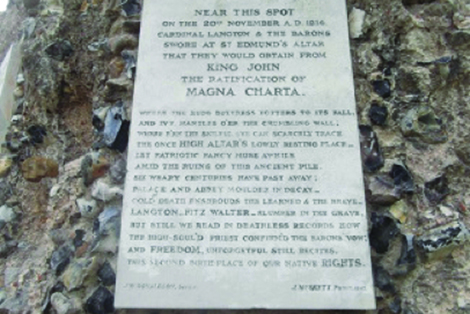We have more than 37 years of experience
Magna Carta – Lincoln Castle Prison
Built in AD 60 Lincoln Castle was a Roman fort until the Romans left Britain in AD 410. William the Conqueror constructed the current Lincoln Castle in 1068 on the site of the Roman fortress. The castle contains two mottes – the Lucy Tower built in the 17th Century and a second tower that was constructed in the 19th Century. For over 900 years, Lincoln Castle was a court and prison. Those imprisoned were placed in a form of isolation. Even the Chapel had a separate seating system in which the prisoners could be seen by the Minister, but the prisoners could not see each other. The prison was abandoned in 1878. The castle is currently maintained by Lincolnshire County Council and is a listed ancient monument.
What is The Magna Carta?
In 1215, after years of ineffective foreign strategies and substantial tax levies, England’s King John was close to witnessing a rebellion by his influential barons. After much debate, he agreed to The Magna Carta. The Magna Carta is one of the most important documents in English history as it placed English sovereigns within the rule of law. It is also the basis of the United States Constitution and part and parcel to many modern day democracies. In addition to a copy of The Magna Carta the castle’s vault will also contain a copy of the Charter of the Forest, which is considered by many to be more important than The Magna Carta. As The Magna Carta dealt with Barons rights, the Charter of the Forest included some rights and protections for commoners against mistreatment from the Monarchy.
The Project
The centrepiece of the works within the prison is a vault to display one of four existing copies of The Magna Carta and the Charter of the Forest. Funded by the Heritage Lottery Fund, Lincolnshire County Council, the Historic Lincoln Trust and European Funding, with an overall budget of £19.9 million, the final phase of improvements to Lincoln Castle is currently underway. Work on the project is due to be completed in time to celebrate the 800th anniversary of The Magna Carta in 2015. Adding to the project is the fact that the castle will remain open to the public throughout. Work is continuing on the refurbishment and restoration of the Georgian and Victorian prison buildings within the castle grounds. In addition to the vault, the project will see numerous upgrades. The work will involve a refurbishment of the Victorian and Georgian prisons, restoration of castle walls and towers, construction of a cinema, shop, cafe, digital interactive displays and interpretation centres.
Councillor Nick Worth, City of Lincoln Council, has said of the scheme;
“This is a real milestone moment for the project. The castle is the only place in the world where The Magna Carta and the Charter of the Forest can be seen together, and this phase of the improvements will give them the home they deserve. This will make the castle an attraction of international importance, bringing in many more visitors from near and far. And that’s good news for the local economy.”
The improvements are being carried out by Robert Woodhead Heritage Ltd, recently responsible for the new Heritage Skills Centre, the first new building in the castle grounds for 150 years.
Simon Butler from Woodhead Heritage added: “We are very pleased and excited to have won the fourth and latest project at Lincoln Castle as this type of project is very rare. The prison buildings are Grade II listed and will require careful conservation, at the same time, we want to ensure the final buildings offer a world class visitor experience.”
The subterranean pod which will be the home of The Magna Carta will be constructed under the ground level of an old fully enclosed exercise yard. Forming a new entrance through the two metre thick stone walls of Lincoln Prison posed quite a problem. Constructed of brick and stone 2 metres thick and requiring precision cutting the walls presented the added difficulty of being vaulted on the inside creating a depth in some areas of nearly three metres.
Method
All of the materials, plant and equipment, including EMDD UNIVERSAL’S high frequency cutting and drilling equipment was lifted in by crane. Prior to cutting taking place, a sequence of large diameter holes were drilled at high level, above the proposed opening, through which ‘needles’ were placed. The needles were supported by a series of props, that effectively formed a cage within which the cutting works could take place. It was a tight squeeze with the wire saw placed on its back. The guide pulleys were grouted into the wall using extra long fixing bolts. A series of smaller diameter holes were drilled through the wall in order to guide the sintered diamond wire. Two horizontal cuts formed an opening for lintels and two vertical side cuts formed the opening to the vault itself. The stone work was carefully removed to reveal the precise finish required by the client.
Client
City of Lincoln Council
Project Type
- Site Preparation
- Stitch Drilling
- Wire Sawing
- Diamond Drilling
Main Contractor
Robert Woodhead Heritage Ltd


Contact Us
Birmingham Office
Fort Dunlop
Fort Parkway
Birmingham
West Midlands
0121 296 2978
